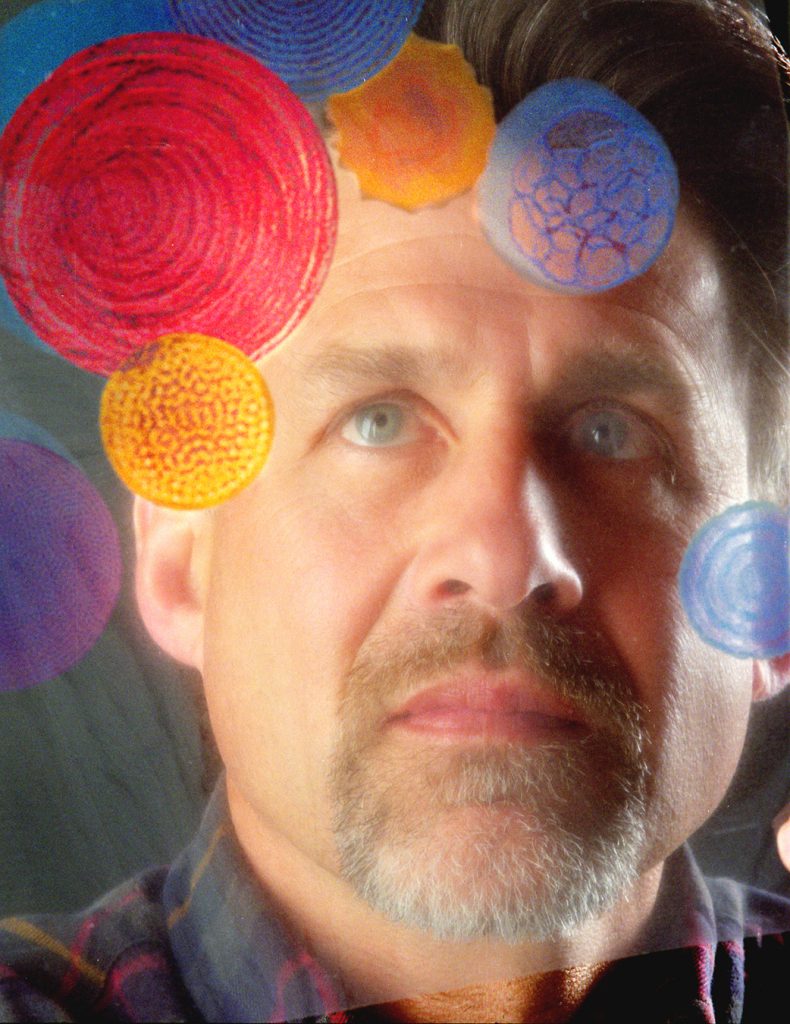
(Photo by Randy Montoya)
Download 300dpi JPEG image, ‘Brinker2.jpg’, 2.1Mb
ALBUQUERQUE, N.M. — Self-assembling nanospheres that fit inside each other like Russian dolls are one form of a broad range of submicroscopic spheres created in the past 12 months at the Department of Energy’s (DOE) Sandia National Laboratories.
The achievement, which has medical, industrial and military potential, is featured in the March 18 issue of the journal Nature.
According to one reviewer, the spheres demonstrate an unprecedented control over organic and inorganic nanoscale self-assemblies, and represent a major step forward in control of these techniques.
The durable silica spheres, which range in size from 2 to 50 nanometers, form in a few seconds, are small enough to be introduced into the body, and have uniform pores that could enable controlled release of drugs. The spheres can absorb organic and inorganic substances including small particles of iron, which means they can be controlled by magnets and the contents released as needed.
The small porous particles also have characteristics superior to fillers used in encapsulants for weapons and tools. The expansion coefficients of polymers and the metallic devices they cradle usually differ substantially. This means that temperature variations cause the encapsulants to stress the devices they are meant to protect. The induced stresses can decrease longevity of a device. Nanosphere fillers would occupy the same volume, but because they are porous can expand and contract with much less stress.
Lastly, the Sandia nanospheres may be useful as coatings on silicon chips whose increasingly tiny circuits require a medium that has a lower dielectric constant and stores less heat.
Some pore shapes trap materials, while others allow free flow in and out of the spheres.
The different kinds of sphere porosity may resemble slits between onion-like layers of silica, or a honeycomb’s hexagonal patterns of holes, or the cubic gaps in a network of connected tinkertoys.
“The ability to control these different porosities makes them useful for all kinds of applications,” says Sandia lead investigator Jeff Brinker. “If they were simply porous particles, they would not be nearly so interesting.”
The mixture begins with a homogeneous solution of soluble silica plus surfactant prepared in an ethanol water solvent. In a continuous process that takes about six seconds per particle, the aerosol particles are dried, heated and collected.
“We start out with liquid droplets that we pass through a reactor,” says Brinker. “As liquid starts to evaporate, the rest of the material self-assembles into a completely ordered particle that, when heated, maintains its shape.”
The spheres are the most intriguing in a series of advances by Brinker and his research associates, all reported in previous publications of Nature.
Prior results by Brinker’s team used simpler but similar techniques to self-assemble highly porous thin films to overlay and greatly increase the porosity and therefore sensitivity of handheld detectors.
Following that achievement came self-assembled laminates that resemble seashells in appearance and properties. This method of self-assembly improved the strength of human-created materials by sandwiching yielding layers of polymers between hard inorganic layers, increasing toughness and preventing the spreading of cracks.
The nanospheres — essentially a three-dimensional creation rather than a film or layering of films — were created by drying liquid droplets blowing through a furnace, rather than evaporation of a liquid layer deposited on a substrate.
The work was supported by DOE’s Basic Energy Science Program, and by the University of New Mexico (UNM)/National Science Foundation Center for Micro-Engineered Materials.
Other authors — all at UNM’s Advanced Materials Laboratory — are Yunfeng Lu, Hongyou Fan, Aaron Stump, Tim Ward, and Thomas Rieker.
Sandia is a multiprogram DOE laboratory, operated by a subsidiary of Lockheed Martin Corp. With main facilities in Albuquerque, N.M., and Livermore, Calif., Sandia has major research and development responsibilities in national security, energy, and environmental technologies and economic competitiveness.